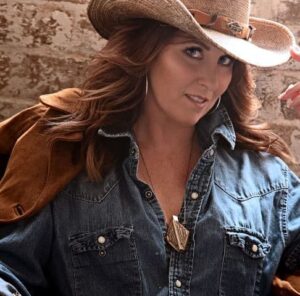Trucking Moves America Forward is getting its message seen across the country on 186 truck wraps, each seen by an estimated 16 million people a year.
Quick quiz: We’ve all heard of the company IBM, but do you know what the letters stand for? How about CBS? Or CVS, as in CVS Pharmacy?
Chances are good you didn’t know all three. Over time some entities become so well-known by their acronym that it replaces the full name – KFC, anyone? In a few rare cases, the alphabet can disappear altogether and a logo becomes all a company needs to be identified, like those golden arches you see hovering over the next off-ramp.
In Trucking Moves America Forward’s case, the name is the logo. But more people in trucking are starting to recognize “TMAF” and what it stands for, and that’s good enough for TMAF co-chairman Kevin Burch and executive committee member Elisabeth Barna.
“The branding has been established, and now it’s starting to resonate to the point that people understand what we are doing,” Barna said at the Mid-American Trucking Show in late March.
It was four years earlier at MATS that TMAF was born, created to accentuate and project a positive image of the trucking industry. Every year when MATS rolls around, TMAF marks its unofficial birthday by releasing their annual report, which this year was titled “The Many Faces of Trucking.”
Prior to MATS, Burch, Barna and other TMAF officials held a press teleconference to highlight some of last year’s successes.
They pointed to the organization’s trailer wrap program, which spreads positive images and information about the trucking industry on the sides of tractor-trailers around the country. It grew to 184 trucks in 2017. Each truck is seen by an estimated 16 million sets of eyes on the highway.
The wraps, Barna said, “they’re like rolling billboards.”
An actual billboard campaign during National Truck Driver Awareness Week generated another estimated 17.4 million impressions.
TMAF’s presence on social media grew in 2017, they reported. The group’s Facebook page now has over 13,500 followers, a 17 percent growth. Twitter followers rose by 32 percent, LinkedIn followers rose 39 percent, and Instagram followers more than doubled. TMAF also launched a blog on Medium, an online publishing forum, which is already closing in on 100 followers.
TMAF’s profile got a big boost when Burch and others from the group were part of a contingent headed by the American Trucking Associations that visited the White House last spring and invited President Donald Trump to climb up inside a cab to see what today’s truck looks like.
And, of course, 2017 saw the debut of Safety Sammy, TMAF’s mascot and goodwill ambassador. Officially named at last year’s Great American Trucking Show in Dallas, the anthropomorphic truck has been touring the country, drawing attention to TMAF and its mission.
About midway through MATS, Burch and Barna sat down to talk about how far TMAF has come in raising its profile and getting out its message.
“It’s amazing to think of how much progress we have made,” Burch said. Both he and Barna acknowledged that when TMAF began they knew that improving trucking’s image was going to take time.
“Let’s face it, we didn’t get to this situation overnight,” Burch said. Trucking’s lived with an image problem for decades. He recounted an incident 15 years ago when that was made bluntly clear to him.
He’d been asked to speak at a high school career day. Two days before the event, he got a call from the principal, who apologized and told him that several of the parents had looked at the list of scheduled presenters and asked that both trucking and tool and die be pulled from the career day itinerary.
A big part of trucking’s problem is that much of the public’s perception is frozen in some decades-old stereotype. This is why so much of TMAF’s strategy to improve trucking’s image is with imagery, they explained.
TMAF conducts polls on a regular basis, Barna said. They have found that the more someone knows somebody in the trucking industry, the better their perception of the industry is. But even if it’s just on a billboard or truck wrap, adding a picture of a truck driver, especially with their family, up there with a few bullet points improves viewer response.
The same study that determined every trailer wrap generates 16 million views also found that 97.5 percent of vewers were left with a positive impression of the industry.
The expansion of the visual campaign and the increased social media presence give TMAF officials reason to celebrate because it indicates the organization has entered a new phase in its long-term strategy.
From the beginning, Barna said, the belief has been that the best way to improve trucking’s image is to first improve its self-image. That’s why for the first few years of its existence TMAF focused most of its efforts within the industry.
“There are so many times, you’ll hear someone say, ‘well, I’m just a truck driver,’” Barna said. “Just a truck driver? Do you know how important you are to everyone’s everyday lives? It goes back to having respect for what you do yourself, and then you gain respect from everyone else.
“If you’re proud of what you do and you gain respect for that, you’re a much better driver and a much better ambassador for the industry.”
Every year TMAF does a callout, asking people in trucking to send in photos of themselves and their trucks. The response grows every year. “It’s exciting to see people that want to get involved,” Barna said.
Having a good feeling about the trucking profession – this is where Safety Sammy comes in. Burch recalled he was at the National Truck Driving Championships a couple years ago and noticed they had a big duck mascot. He started thinking, “Why don’t we have a mascot?” Sports teams have them, and they become symbols for fans to rally around.
Sammy presents the friendliest of images for trucking. And, of course, he’s a kid magnet, which hopefully will have long-term benefits.
The industry is going to need a million new drivers in the next 10 years, Burch said. It will be a lot easier to convince young people to consider a career in trucking if they have a positive impression of the industry from a young age.
In the shorter term, TMAF is doing what it can to show people who are already driving age that trucking is a lot more appealing than those old stereotypes. Truck drivers today might be your next-door neighbor. They’re raising families, going to your church. They sleep in the same bed every night, Barna quipped, the only difference is that bed moves around the country.
Burch pointed out another facet of improving the image of trucking is to improve the image of trucks. That White House visit was a great example of how people react when they see a modern, well-maintained cab.
“The president wanted to get up into one of the trucks,” Burch recalled. He said when Trump climbed in with an instructor, he shut the door behind him, much to the dismay of the Secret Service. Later, the instructor said the president asked him about the all new safety technology he’d been hearing about.
That’s pretty typical, Burch said. Whether it’s a congressman or your average citizen, “when they look inside the reaction is, ’Whoa! This isn’t what I thought it looked like.’”
“The comfort area has drastically changed, just like the way cars are today compared to like in the ’60s and ’70s,” Burch added. And then when you start explaining all the safety technology: lane departure, anti-rollover, etc., younger people especially are impressed.
“We’re safer today than we were 20 or 30 years ago,” he said.
Of course, not everyone who sees what modern trucks are like is going to run out and get their CDL. But everything that helps show people what trucks and the people who drive them are really like today plays a part in TMAF’s mission.
“Telling the story, that’s what it’s really all about,” Barna said.
FYI – in case you are still wondering, IBM stands for International Business Machines, CBS was originally the Columbia Broadcasting System, and CVS Pharmacy once went by the name Consumer Value Stores.
Klint Lowry has been a journalist for over 20 years. Prior to that, he did all kinds work, including several that involved driving, though he never graduated to big rigs. He worked at newspapers in the Detroit, Tampa and Little Rock, Ark., areas before coming to The Trucker in 2017. Having experienced such constant change at home and at work, he felt a certain kinship to professional truck drivers. Because trucking is more than a career, it’s a way of life, Klint has always liked to focus on every aspect of the quality of truckers’ lives.













